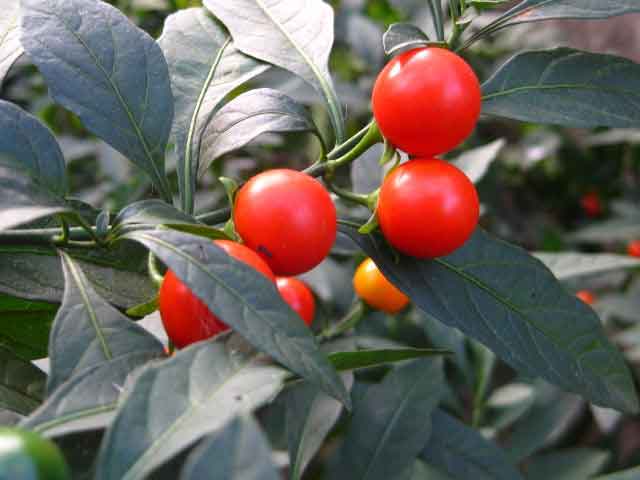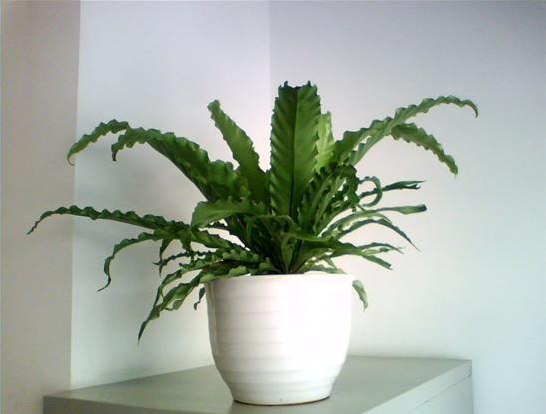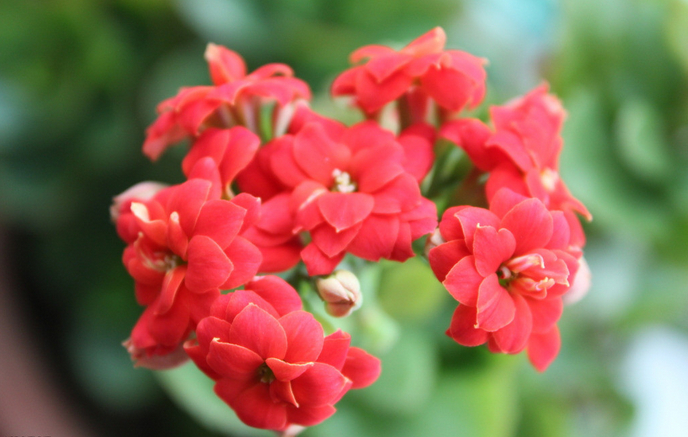How to plant winter coral in pots
Winter coral planting, water and fertilizer, light and other conditions are conducive to the normal growth and flowering and fruiting of the plant, so it can flourish leaves and branches and red fruit without careful management. However, due to the limitation of cultivation containers and climatic factors, too much water can easily lead to rotten roots, fallen leaves or flowers, while over-dry pot soil can easily cause plant root atrophy, plant withering and defoliation, and it is difficult to bloom and bear fruit normally. Especially during the flowering period, if the potted soil is dry and wet and the fertilizer concentration is out of control, it is easy to lead to only flowering, no fruit or light flowering and less fruiting.
Potted winter corals require the use of loose, fertile, well-drained sandy loam soil rich in organic matter, with 5% retted cake fertilizer or chicken and duck manure. After transplanting the seedlings into the pot, spraying the new high-fat film can effectively prevent the aboveground water from evaporating, the seedling water from not transpirating, isolating the diseases and insect pests, shortening the slow seedling period, quickly adapting to the new environment and growing healthily.
After the slow seedling stage survived, carry on the normal water, in order to keep the basin soil moist as the degree, loosen the soil and fertilize once every semimonthly. And give sufficient light, when the plant is about 10 centimeters high, take the head off the heart to promote sprouting. Spraying Chuhuawang No. 3 can transform plant vegetative growth into reproductive nutrition, inhibit the crazy growth of main shoots and promote flower bud differentiation. Plants enter the bud stage, suspend fertilization, at the same time control watering, try not to spray water, can avoid flushing pollen. Spray Zhuangguotieling, thicken the pedicel, increase the amount of nutrition transport, prevent flower and fruit drop. When the fruit grows to the size of mung bean, the cake fertilizer can be restored, the amount of water can be increased, and proper foliar spraying can be given at the same time. When the fruit diameter is 0.5 cm to 0.6 cm, the over-dense small fruits should be properly removed, and the diseases and insect pests should be removed at the same time, so that the fruits on the potted plants can be evenly distributed and symmetrical in size, thus improving the ornamental value of the potted plants.

Potted winter corals are easy to suffer from anthracnose when they are at high temperature in summer, which is mainly harmful to leaves and stems. There are two symptoms:-species occur on time sheets, and the leaves show round disease spots at the initial stage of the disease, changing from round reddish brown to grayish white. then turn dark brown and produce black spots arranged in the wheel, that is, the conidium disk of the pathogen, the disease occurs at the leaf edge and leaf tip, and when the leaf is serious, the leaf withered and died. The pathogen is fungal disease, the pathogen overwinters with mycelium in parasitic remains or soil, the old leaves begin to occur from late April to early May, the disease is faster from June to July, the disease is more serious in the rainy season, and the new leaves begin to occur in August. If the potted flowers are placed too densely, the leaves cross each other and it is easy to spread the disease, but there are differences in disease resistance among varieties. How to plant winter coral in pots? How to raise potted winter coral?
Readers in Ninghai County, Zhejiang Province wrote to ask: winter corals planted in the ground can grow luxuriantly and fruitfully without management, while careful management of potted winter corals can only blossom and bear less fruit. I don't know why? How should it be managed?
Answer: winter coral is an erect shrub of Solanaceae, native to Eurasian tropics. Winter coral planting, soil, water and fertilizer, light and other conditions are conducive to the normal growth and flowering and fruiting of the plant, so it can flourish leaves and red fruit without careful management. However, due to the limitation of cultivation containers and climatic factors, too much water can easily lead to rotten roots, fallen leaves or flowers, while too dry pot soil can easily lead to plant root atrophy, plant withering and defoliation, and it is difficult to bloom and bear fruit normally. Especially during the flowering period, if the potted soil is dry and wet and the fertilizer concentration is out of control, it is easy to lead to only flowering, no fruit or light flowering and less fruiting. Potted winter corals require the use of loose, fertile, well-drained sandy loam soil rich in organic matter, with 5% retted cake fertilizer or chicken and duck manure. During the growing season, loosen the soil and apply fertilizer every semimonthly. When the plant is about 10 centimeters high, take the head off the heart to promote sprouting. When the temperature is above 30 ℃, it can be transferred to a well-ventilated greenhouse or tree shade with 40% shade. When the plant enters the budding stage, 0.2% potassium dihydrogen phosphate should be added to the organic fertilizer solution, which can promote more buds to blossom. Suspend fertilization during flowering, at the same time control watering, try not to spray water, in order to keep the potted soil moist, it can not only avoid flushing pollen, but also prevent the occurrence of falling flowers and fruits.
When the fruit grows to the size of mung bean, the cake fertilizer can be restored, the amount of water can be increased, and proper foliar spraying can be given at the same time. From after fruit setting to before fruit color, quick-acting phosphate fertilizer should be applied for 2 to 3 times. If 0.2% potassium dihydrogen phosphate solution is applied, the fruit can be brightened. When the fruit diameter is 0.5 cm to 0.6 cm, the over-dense small fruits should be properly removed, and the diseases and insect pests should be removed at the same time, so that the fruits on the potted plants can be evenly distributed and symmetrical in size, so as to improve the ornamental value of potted plants.
The pot planting method of winter coral, soil, water and fertilizer, light and other conditions are conducive to the normal growth and flowering and fruiting of the plant, so it can flourish leaves and red fruit without careful management. However, due to the limitation of cultivation containers and climatic factors, too much water can easily lead to rotten roots, fallen leaves or flowers, while too dry pot soil can easily lead to plant root atrophy, plant withering and defoliation, and it is difficult to bloom and bear fruit normally. Especially during the flowering period, if the potted soil is dry and wet and the fertilizer concentration is out of control, it is easy to lead to only flowering, no fruit or light flowering and less fruiting. Potted winter corals require the use of loose, fertile, well-drained sandy loam soil rich in organic matter, with 5% retted cake fertilizer or chicken and duck manure. After transplanting the seedlings into the pot, spraying the new high-fat film can effectively prevent the aboveground water from evaporating, the seedling water from not transpirating, isolating the diseases and insect pests, shortening the slow seedling period, quickly adapting to the new environment and growing healthily. After the slow seedling stage survived, carry on the normal water, in order to keep the basin soil moist for the degree, loosen the soil and fertilize once a half month. And give sufficient light, when the plant is about 10 cm high, take the head off the heart to promote cuteness. Spraying Chuhuawang No. 3 can transform plant vegetative growth into reproductive nutrition, inhibit the crazy growth of main shoots and promote flower bud differentiation. Plants enter the bud stage, suspend fertilization, at the same time control watering, try not to spray water, can avoid flushing pollen. Spray Zhuangguotieling, thicken the pedicel, increase the amount of nutrition transport, prevent flower and fruit drop. When the fruit grows to the size of mung bean, the cake fertilizer can be restored, the amount of water can be increased, and proper foliar spraying can be given at the same time. When the fruit diameter is 0.5 cm to 0.6 cm, the over-dense small fruits should be properly removed, and the diseases and insect pests should be removed at the same time, so that the fruits on the potted plants can be evenly distributed and symmetrical in size, so as to improve the ornamental value of potted plants. Potted winter corals are easy to suffer from anthracnose when they are at high temperature in summer, which is mainly harmful to leaves and stems. There are two symptoms: one occurs on time sheets, and the leaves show round disease spots at the initial stage of the disease, changing from round reddish brown to grayish white. then turn dark brown and produce black spots arranged in the wheel, that is, the conidium disk of the pathogen, the disease occurs at the leaf edge and leaf tip, and when the leaf is serious, the leaf withered and died. The pathogen is fungal disease, the pathogen overwinters with mycelium in parasitic remains or soil, the old leaves begin to occur from late April to early May, the disease is faster from June to July, the disease is more serious in the rainy season, and the new leaves begin to occur in August. If the potted flowers are placed too densely, the leaves cross each other and it is easy to spread the disease, but there are differences in disease resistance among varieties. Control methods: 1. Disease control: ①, selection of disease-resistant varieties. ②, cut off the diseased leaves in the early stage of the disease and burn them in time to prevent the bacteria from spreading and spreading, avoid being too dense and drenched at the head, and often maintain ventilation and light transmission. ③, spraying 50% carbendazim wettable powder 700-800 times or 75% chlorothalonil 500 times at the initial stage of the disease. 2. Pest control: winter coral pests are mainly aphids, small, green or black, often clustered on the tender branches and leaves of a variety of flowers to suck nutrients. Prevention and treatment: spray with 2000 times of omethoate EC or 1500-2000 times of dichlorvos EC.
- Prev

Techniques and techniques of hydroponic culture of bird's nest fern
Bird's nest fern is a species of Dryopteris Dryopteris of the family Pteridaceae. Bird's nest fern is a kind of epiphytic fern, which is a perennial shady herb foliage plant. Bird's nest ferns can be hydroponically cultivated, but it has been proved that soil culture can grow better. When hydroponically cultured bird nest fern
- Next

Are longevity flowers suitable for indoor cultivation?
Longevity flowers have many colors, easy to raise and other advantages-the body is very popular with flower friends, some flower friends want longevity flowers to grow indoors, but do not know if longevity flowers are suitable for indoor cultivation, longevity flowers can be raised indoors, but we should take a look at the specific situation. In the first case, the longevity flowers are watched indoors during the flowering period.
Related
- Fuxing push coffee new agricultural production and marketing class: lack of small-scale processing plants
- Jujube rice field leisure farm deep ploughing Yilan for five years to create a space for organic food and play
- Nongyu Farm-A trial of organic papaya for brave women with advanced technology
- Four points for attention in the prevention and control of diseases and insect pests of edible fungi
- How to add nutrient solution to Edible Fungi
- Is there any good way to control edible fungus mites?
- Open Inoculation Technology of Edible Fungi
- Is there any clever way to use fertilizer for edible fungus in winter?
- What agents are used to kill the pathogens of edible fungi in the mushroom shed?
- Rapid drying of Edible Fungi

